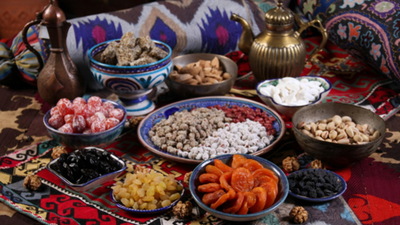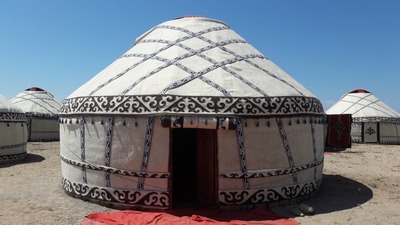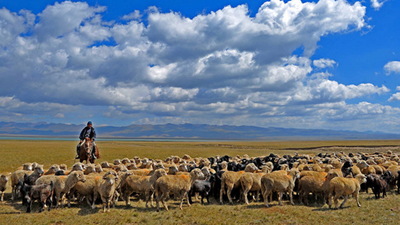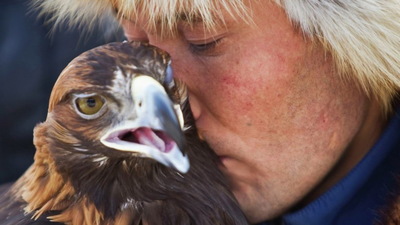Tunduk
Tunduk, is a central part of the Yurt dome, a wooden structure, made up of a hoop (Alkala), within which the wooden bands are called "chamgarak". "Chamgarak" is built from six curved raids, which are secured across the alien wall Alkala. On the outside of Alkala, there are spaced holes (from 60 to 100), which form the side panels that form the Yurt dome.
The height of tunduk, the diameter of Alcala and the number of poles directly depend on the size of the yurt. The process of making tunduk was long and laborious, so there was a special master who did it, called "tundukchi". Usually, tunduk is made from willows, poplars or tufuts, but the experienced tundukchi prefer to use elm elk, it is difficult to bend it, that's why the duct has an exceptional strength and used by families for a lifetime.
Tunduk, was of great practical importance. It served as a natural light window. Due to the location of tunduk, there may be good illumination and ventilation. It also serves as a cover for opening smoke and smoke. During the cool season, in order keep warm in the yurt, tunduk is covered by conopy (called tunduc, jabu), which is steered by ropes.
For nomads, the yourt was not only a dwelling; it also was a small model of the Universe, where the tunduk was the supreme force.
The sacred meaning of tunduk is featured in the rich folk heritage of Turkic nomads. Kyrgyz people thought that the welfare of family was connected with tunduk location, so it was forbidden to replace it. There was a saying that if someone wish to fall tunduk down, then the family will be unhappy. The image of tunduk can be found on the flag of the state and the emblem of Turkic people as a symbol of unity and fidelity of their national traditions.




